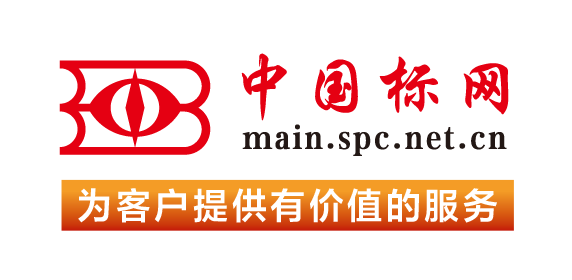【国外标准】 Standard Guide for Conducting Sediment Toxicity Tests with Polychaetous Annelids
本网站 发布时间:
2024-02-28
开通会员免费在线看70000余条国内标准,赠送文本下载次数,单本最低仅合13.3元!还可享标准出版进度查询、定制跟踪推送、标准查新等超多特权!
查看详情>>
适用范围:
5.1 The test procedure covered in this guide is not intended to simulate exactly the exposure of benthic polychaetes to chemicals under natural conditions, but rather to provide a conveniently rapid, standard toxicity test procedure yielding a reasonably sensitive indication of the toxicity of materials in marine and estuarine sediments.5.2 The protection of a community of organisms requires averting detrimental contaminant-related effects on the number and health of individuals and species within that population. Sediment toxicity tests provide information on the toxicity of test materials in sediments. Theoretically, projection of the most sensitive species within a community will protect the community as a whole.5.3 Polychaetes are an important component of the benthic community. They are preyed upon by many species of fish, birds, and larger invertebrate species, and they are predators of smaller invertebrates, larval stages of invertebrates, and, in some cases, algae, as well as organic material associated with sediment. Polychaetes are sensitive to both organic and inorganic chemicals (1, 2).5 The ecological importance of polychaetes, their wide geographical distribution and ability to be cultured in the laboratory, and sensitivity to chemicals, make them appropriate toxicity test organisms.5.4 An acute or 10-day toxicity test is conducted to obtain information concerning the immediate effects to a test material on a test organism under specified experimental conditions for a short period of time. An acute toxicity test does not necessarily provide information concerning whether delayed effects will occur, although a post-exposure observation period, with appropriate feeding, if necessary, could provide such information.5.5 The results of acute sediment toxicity tests can be used to predict acute effects likely to occur on aquatic organisms in field situations as a result of exposure under comparable conditions, except that (1) motile organisms might avoid exposure when possible and (2) toxicity to benthic organisms can be dependent on sediment characteristics, the dynamics of equilibrium partitioning, and the route of exposure to the benthic organisms.5.6 The polychaete sediment toxicity test might be used to determine the temporal or spatial distribution of sediment toxicity. Test methods can be used to detect horizontal and vertical gradients to toxicity. Mortality data can be used to indicate the relative toxicity of field-collected sediments.5.7 The results of acute tests with toxicants added experimentally to sediments can be used to compare the acute sensitivities of different species and acute toxicities of different test materials, and to define the effects of various environmental factors on the results of such tests.5.8 The results of acute sediment toxicity tests are useful for studying the biological availability of, and structure-activity relationships between, test materials in sediment.5.9 The results of acute sediment toxicity tests might be an important consideration when assessing the hazards of materials to aquatic organisms (see Guide E1023) or when deriving the sediment quality for aquatic organisms (3). Sediment toxicity tests might be useful for making decisions regarding the extent of remedial action necessary for contaminated sites.5.10 A 10-day test provides data on the short-term effects that are useful for comparisons to other species but does not provide information on delayed effects. Results of the 20-day to 28-day sediment toxicity test, which measures growth in addition to survival, can be useful indicators of the effects of contaminated sediments over a longer time period.1.1 This guide covers procedures for obtaining laboratory data concerning the adverse effects of potentially contaminated sediment, or of a test material added experimentally to contaminated or uncontaminated sediment, on marine or estuarine infaunal polychaetes during 10-day or 20 to 28-day exposures. These procedures are useful for testing the effects of various geochemical characteristics of sediments on marine and estuarine polychaetes and could be used to assess sediment toxicity to other infaunal taxa, although modifications of the procedures appropriate to the test species might be necessary. Procedures for the 10-day static test are described for Neanthes arenaceodentata and Alitta virens 2 (formerly Nereis virens and Neanthes virens) and for the 20 to 28-day static-renewal sediment toxicity for N. arenaceodentata.1.2 Modifications of these procedures might be appropriate for other sediment toxicity test procedures, such as flow-through or partial life-cycle tests. The methods outlined in this guide should also be useful for conducting sediment toxicity tests with other aquatic taxa, although modifications might be necessary. Other test organisms might include other species of polychaetes, crustaceans, and bivalves.1.3 Other modifications of these procedures might be appropriate for special needs or circumstances. Although using appropriate procedures is more important than following prescribed procedures, the results of tests conducted using unusual procedures are not likely to be comparable to those of many other tests. Comparisons of the results obtained using modified and unmodified versions of these procedures might provide useful information concerning new concepts and procedures for conducting sediment tests with infaunal organisms.1.4 These procedures are applicable to sediments contaminated with most chemicals, either individually or in formulations, commercial products, and known or unknown mixtures. These procedures can be used with appropriate modifications to conduct sediment toxicity tests on factors such as temperature, salinity, dissolved oxygen (DO), and natural sediment characteristics (for example, particle size distribution, organic carbon content, and total solids). These procedures can also be used to conduct bioconcentration tests and in situ tests, and to assess the toxicity of potentially contaminated field sediments, or of materials such as sewage sludge, oils, particulate matter, and solutions of toxicants added to sediments. A median lethal concentration (LC50) or median sublethal effect concentration (EC50) of toxicants or of highly contaminated sediment mixed into uncontaminated sediment can be determined. Materials adhering to sediment particles or dissolved in interstitial water can be tested.1.5 The results of 10-day toxicity tests with contaminated sediments can be reported as a LC50 if a series of concentrations is tested or as a percent mortality relative to a control or reference sediment. The results of 20 to 28-day toxicity tests with contaminated sediments can be reported as a LC50 if a series of concentrations is tested or as a percent mortality or growth relative to a control or reference sediment.1.6 This guide is arranged as follows: SectionReferenced Documents 2Terminology 3Summary of Guide 4 5Interferences 6Apparatus 7 Facilities 7.1 Construction Materials 7.2 Test Chambers 7.3 Cleaning 7.4 Acceptability 7.5Hazards 8Test Water 9 General Requirements 9.1 Source 9.2 Preparation 9.3 Characterization 9.4Test and Control Sediments 10 General 10.1 Characterization 10.2 Control Sediment 10.3 Field-Collected Test Sediment 10.4 Reference Sediment 10.5 Laboratory-Spiked Test Sediment 10.6 Test Concentration(s) 10.7 Addition of Toxicant to Sediment 10.8Test Organisms 11 Species 11.1 Age 11.2 Feeding 11.3 Source 11.4 Collection and Handling 11.5 Quality 11.6 Experimental Design 12 Controls 12.2 Field Survey Design 12.3 Laboratory Experiments 12.4 Procedure 13 Dissolved Oxygen 13.1 Temperature 13.2 Salinity 13.3 Light 13.4 Feeding 13.5 Beginning of Test 13.6 Duration of Test 13.7 Biological Data 13.8 Other Measurements 13.9 Analytical Methodology 14 Acceptability of Test 15 Interpretation of Results 16 Report 17 Keywords 18 Annexes Neanthes arenaceodentata Annex A1 Alitta virens Annex A21.7 The values stated in SI units are to be regarded as standard. No other units of measurement are included in this standard.1.8 This standard does not purport to address all of the safety concerns, if any, associated with its use. It is the responsibility of the user of this standard to establish appropriate safety, health, and environmental practices and determine the applicability of regulatory limitations prior to use. Specific hazards statements are given in Section 8.1.9 This international standard was developed in accordance with internationally recognized principles on standardization established in the Decision on Principles for the Development of International Standards, Guides and Recommendations issued by the World Trade Organization Technical Barriers to Trade (TBT) Committee.
标准号:
ASTM E1611-21
标准名称:
Standard Guide for Conducting Sediment Toxicity Tests with Polychaetous Annelids
英文名称:
Standard Guide for Conducting Sediment Toxicity Tests with Polychaetous Annelids标准状态:
Active-
发布日期:
-
实施日期:
出版语种:
- 推荐标准
- 国家标准计划
- BS EN ISO 16946:2024 Non-destructive testing. Ultrasonic testing. Specification for a step wedge standard block
- BS EN IEC 61753-082-02:2024 Fibre optic interconnecting devices and passive components. Performance standard
- BS ISO 5501-2:2024 Tobacco heating systems. Definitions and standard conditions for aerosol generation and collection
- BS ISO 5501-3:2024 Tobacco heating systems. Definitions and standard conditions for aerosol generation and collection
- BS ISO 5501-1:2024 Tobacco heating systems. Definitions and standard conditions for aerosol generation and collection
- BS ISO 24138:2024 Information and documentation. International Standard Content Code (ISCC)
- 24/30492859 DC BS EN IEC 61753-1 Fibre optic interconnecting devices and passive components - Performance standard
- BS EN IEC 61753-071-02:2020+A1:2024 Fibre optic interconnecting devices and passive components. Performance standard
- 24/30491443 DC standard
- KS D ISO 9226 금속 및 합금의 부식-대기의 부식성-부식성 평가를 위한 표준 시험편의 부식 속도 결정
- KS B 0831 비파괴검사 — 초음파탐상검사 — 표준 시험편
- 24/30489392 DC BS EN IEC 62358 Ferrite cores. Standard inductance factor for gapped cores and its tolerance
- BS ISO 19848:2024 - TC Tracked Changes. Ships and marine technology. Standard data for shipboard machinery and equipment
- BS ISO 19848:2024 Ships and marine technology. Standard data for shipboard machinery and equipment
- 24/30487130 DC BS EN 50566:2017/A2:2024 Product standard to demonstrate the compliance of wireless communication
 购物车
购物车 400-168-0010
400-168-0010












